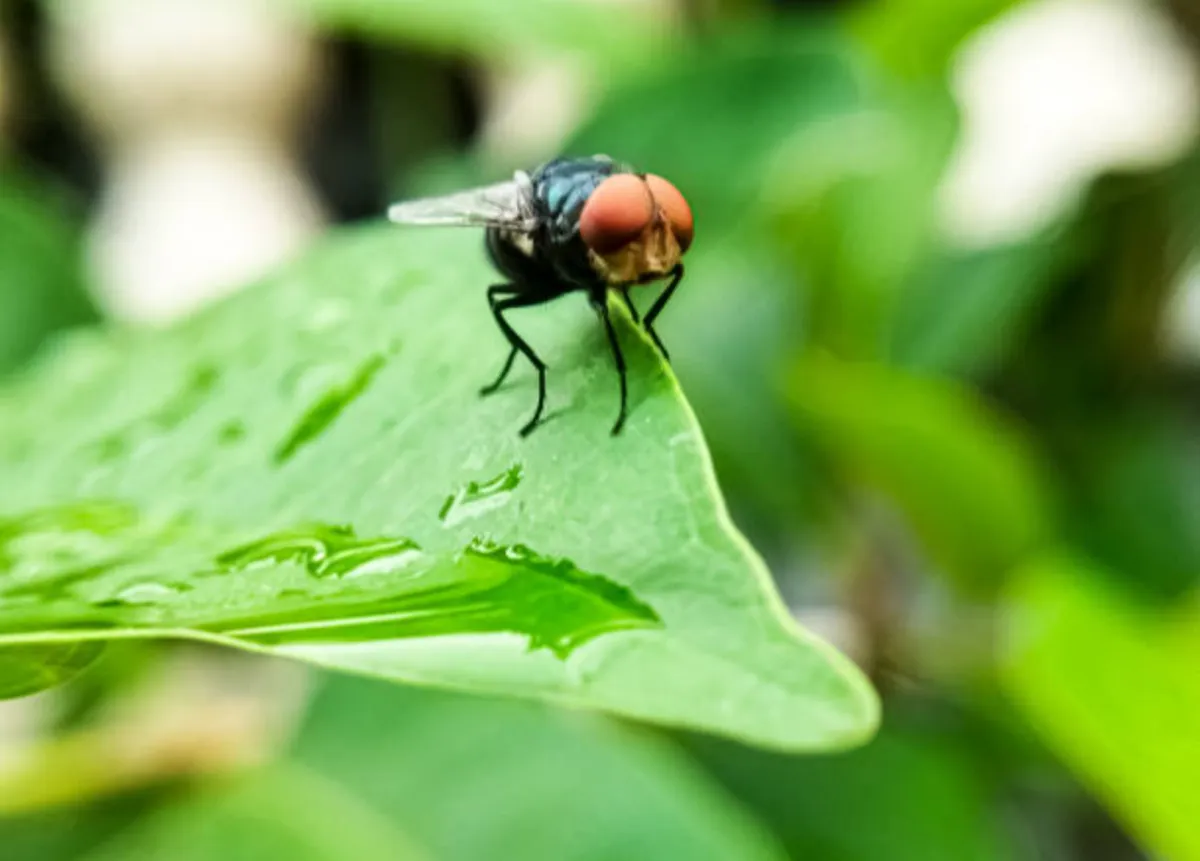
A Billion-Dollar Pest Threat and the USDA’s Big Response
The New World screwworm isn't named lightly. The name comes from the fact that the adult fly bores into the flesh of warm-blooded animals and starts eating living tissue. For generations, ranchers in the U.S. have fretted over the parasite more than droughts or high feed prices because an outbreak can wipe out an entire herd in a matter of weeks. The U.S. had long been successful in suppressing it, but now the parasite is back at the border and the federal government is spending big to keep it out.
Earlier this month, the USDA announced a nearly $750 million investment in a new sterile insect production facility in Edinburg, Texas. The facility will work to breed and sterilize up to 300 million screwworm flies per week, then release them into the environment to suppress wild populations and stop outbreaks in their tracks.
The principle behind this so-called “sterile insect technique” is simple but effective. If sterile male insects can outcompete their wild counterparts, then they will not reproduce and the outbreak will collapse before it can spread. The U.S. developed this technique decades ago, but this is the first time in years that a purpose-built plant of this size has been erected domestically.
Officials are taking action now because the parasite has already begun to creep north from current outbreaks in Mexico, alarming ranching communities in Texas and beyond. Screwworms are a different class of pest from those that nibble at the margins of productivity. When they take hold, these parasites can kill calves, maim adult cattle, and spread through herds at an alarming rate.
The consequences extend well beyond the ranch. Ripples across beef supply, veterinary costs, and food security are real, with major implications for an entire industry.
The Edinburg facility is only one part of the government’s response. The USDA is also earmarking an additional $100 million in spending for new surveillance technology and rapid response tools and shoring up a secondary deployment site at the former Moore Air Base in case emergency releases become necessary. In Texas, ranchers are already being briefed on how to identify and report the pest as part of a broader effort to keep producers engaged and prepared.
Why all the urgency? In the middle of the last century, before the sterile fly release program was developed and scaled up in the years that followed, screwworm infestations were costing U.S. ranchers hundreds of millions of dollars per year and forcing extreme countermeasures like mass culls of livestock. Eradication was only achieved after the U.S. government rolled out the sterile fly release program in the 1950s and expanded it for decades. To many in the cattle industry, seeing the New World screwworm back on their doorstep is déjà vu and a reminder that pests don’t respect borders.
The sheer size of the USDA’s new investment is indicative of the stakes. For cattle producers, and especially for those in Texas, where the U.S.’s largest cow-calf operations are clustered, the threat posed by the New World screwworm is a direct threat to their livelihood.
Industry experts estimate that were the parasite to reestablish a presence in U.S. herds, annual losses could run into the billions of dollars. Losses would stem not just from livestock mortality, but also from the additional veterinary expenses, quarantines, trade restrictions, and wider supply chain impacts sure to come. In a country where beef producers, packers, and exporters are all struggling to meet historic export demand from around the globe, that kind of disruption would have global market impacts.
Alert levels are already high for producers in border states. Many ranchers in the region remember or have heard horror stories from their parents and grandparents about the years when calves were lost by the hundreds overnight, when branding season meant not just branding new calves but also stitching wounds closed, when screwworms turned already-grizzled ranching families into unwilling battlefield medics. The fear now is less about whether eradication can work, decades of science has proven that it can, and more about whether the government can move fast enough to suppress the screwworm before it gains a toehold.
This is one reason rancher buy-in will be so critical to the program’s success. Federal entomologists can release as many sterile flies as the new plant can produce, but the eyes and ears of the operation are producers on the ground. The faster they can report suspected cases, coordinate with vets, and make site access available for surveillance, the better the chances of a contained flare-up instead of a nationwide emergency.
There’s another angle that’s important, too. Agricultural trade groups are already hailing the USDA’s move as a win not just for food security but for national security as well. In a year where border security and supply chain resilience are the order of the day in Washington, screwworms, and the USDA’s efforts to fight them, check both boxes.
Looking ahead, though, success will be defined by absence. If the program works, outbreaks will drop out of the headlines as quickly as they reappeared in recent months, and ranchers will go back to working their ranches without the specter of a pest that their grandparents went to the brink of eradicating. But should the rollout falter, the industry will face the kind of long-term, across-the-board damage that could fundamentally reshape agriculture from Texas to Arizona and beyond.